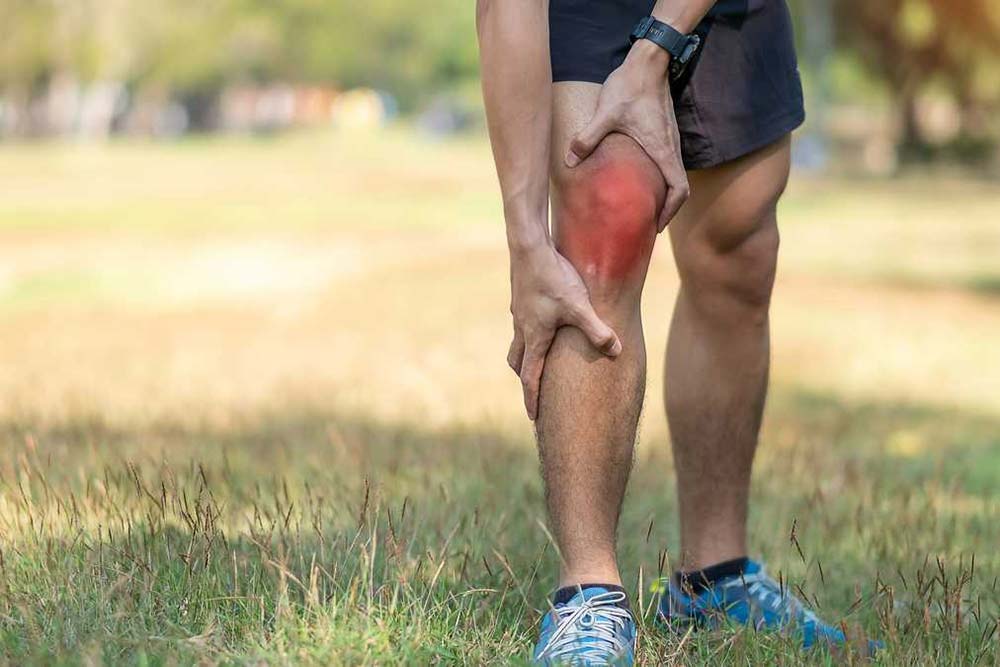Have you ever heard of osteoarthritis? It’s the most common sort of joint pain.
Statistics say that more than 500 million individuals in the world have osteoarthritis. This is also the most prevalent joint ailment among Americans. The rise in the number of people with osteoarthritis is attributed to the growing elderly population and worsening obesity issue in the United States.
What is Osteoarthritis?
Osteoarthritis is a degenerative disease characterized by the breakdown of joint components.
It is an entirely different condition than osteoporosis, a disorder in which bones in the body become brittle. The most common form of arthritis, osteoarthritis, is a biomechanical and physiological condition.
What happens when you have osteoarthritis? According to the American Academy of Orthopedic Surgeons (AAOS), if you have this condition, the cartilage that acts as a cushion between bones gradually wears away, and this causes the bones to scrape and grind against each other, causing pain. Osteoarthritis develops over months or years. The commonly affected areas are the weight-bearing joints like the knees, hips, spine, and feet. Other than joint discomfort, it does not make you ill or tired like different kinds of inflammatory arthritis.
Diagnostic Tests for Osteoarthritis
Your doctor will conduct a physical exam for osteoarthritis. Usually he or she will examine your afflicted joint for soreness, edema, redness, and flexibility. Aside from a physical exam, your doctor may also recommend some tests, including these two:
- Imaging Tests
Your doctor may suggest that you acquire photographs of the afflicted joint by
- X-rays
Cartilage loss it self cannot be seen in x-rays. But its effect can show up during the scan. Bone spurs surrounding a joint can be an indication that you have osteoarthritis.
- Magnetic Resonance Imaging (MRI)
An MRI produces comprehensive scans of tissues and bones, including cartilage. It uses radio waves and a strong magnetic field. This is not the first choice when you want to check for osteoarthritis but it is a helpful test if you need additional information to diagnose the condition.
- Lab Tests
Blood or joint fluid analysis can assist confirm the diagnosis.
- Blood Tests. Although no blood test exists to diagnose osteoarthritis, it can help rule out other causes of joint pain, like rheumatoid arthritis.
- Joint Fluid Analysis. In this process, your doctor may use a needle to get fluid from an inflamed joint. The fluid is then examined for inflammation. This is to determine if your pain is because osteoarthritis or other causes, like gout.
Possible Treatments For Osteoarthritis
- Medications
The following medications can help reduce osteoarthritis symptoms, particularly pain:
- Acetaminophen. Acetaminophen (Tylenol, various brands) has benefited some patients with mild to severe osteoarthritis pain. Acetaminophen in excess of the recommended dosage might injure the liver.
- Nonsteroidal anti-inflammatory medications (NSAIDs). When used as directed, over-the-counter NSAIDs like ibuprofen (Advil, Motrin IB, and others) and naproxen sodium (Aleve) reduce osteoarthritis pain. Prescriptions are available for stronger NSAIDs.
- Duloxetine is a drug that is used to treat depression (Cymbalta). This medicine often used to treat depression, is also licensed to treat chronic pain, including osteoarthritis pain.
- Therapy
- Physical Therapy. A physical therapist can show you exercises to strengthen the muscles around your joints, increase flexibility, and reduce pain. Regular modest activity, such as swimming or walking on your own, may be beneficial.
- Occupational Therapy is a type of treatment in which an occupational therapist helps you figure out how to do regular chores without aggravating your already painful joints. If you have osteoarthritis in your hands, a toothbrush with an oversized handle may make cleaning your teeth simpler.
- Transcutaneous electrical nerve stimulation (TENS). To relieve the pain, you the therapist may use a low-voltage electrical current. Some patients with knee and hip osteoarthritis attest that it is helpful for short teram treatment.
- Surgical and other treatments
If conservative therapy is ineffective, you can check the following treatments:
- Injections with cortisone. Injecting Corticosteroid into your joint may relieve pain for a few weeks. Your doctor numbs the area around your joint before administering the injection.
- Lubrication injections. Hyaluronic acid injections help ease discomfort by providing a sort-of cushion in your knee. But other studies suggest that they are no better than a placebo. Hyaluronic acid is a substance that can be found in joint fluid.
- Joint replacement surgery. Your surgeon will remove your damaged joint surfaces. He or she will then replace them with plastic and metal parts during joint replacement operation. Artificial joints can wear out or become loose over time, so you must expect replacement surgery after a while.
Osteoarthritis is a degenerative joint disease that has no cure. That is why ostearthritis clinical trials at Power are helpful in finding possible ways to treat or even fight the disease. Managing your condition and symptoms can help you prevent future joint injury. You can supplement your treatment strategy with home and natural remedies. Get diagnosed early and learn how to manage this condition so you can get ahead in life despite having osteoarthritis.

